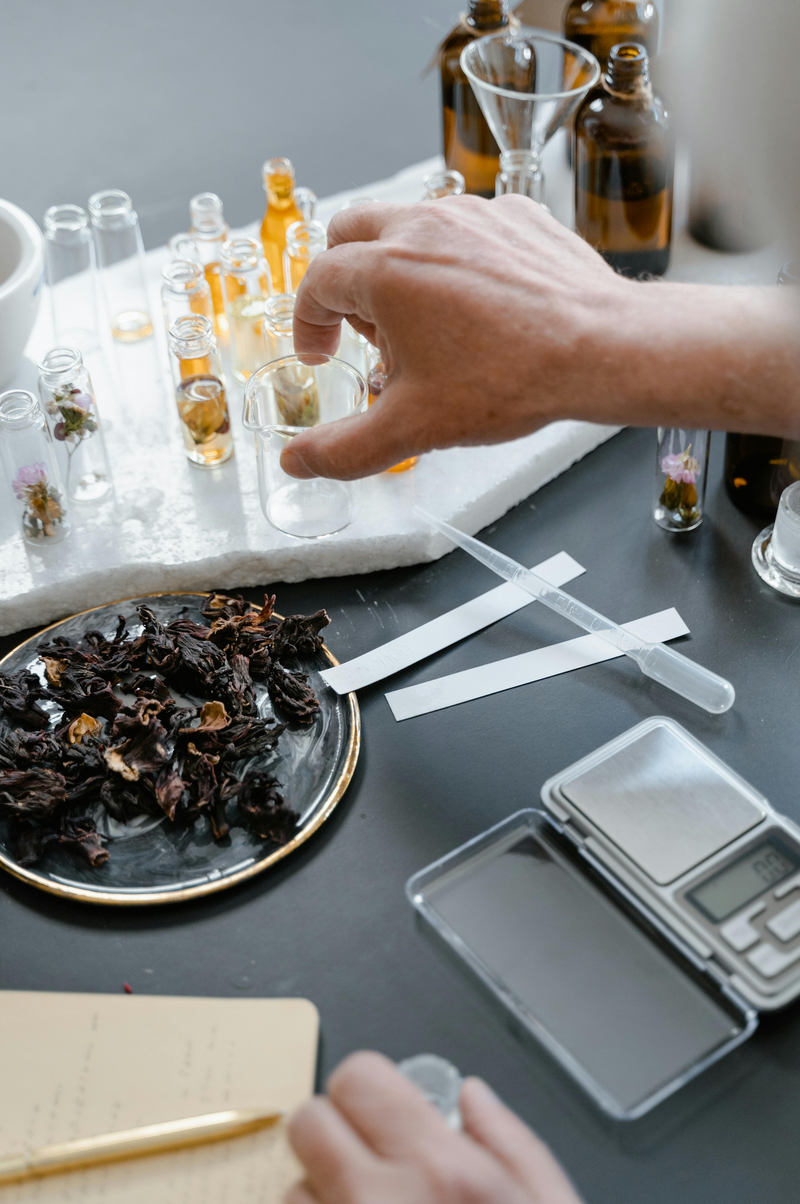2024.12.09
Perfume Trivia | The Art of Synthetic Fragrances

The world of fragrance is mysterious. Just one sniff can bring us back to past memories or invite us to unknown places. When I learned that such fragrances are born not only from nature but also from the power of science, I was moved by their beauty and depth. Synthetic fragrances seem like invisible art woven by human hands.
The journey to create a fragrance begins with nature. To recreate the beauty of jasmine, vanilla, and citrus scents, the chemical components that make up the scent are first analyzed in detail. For example, the scent of jasmine contains compounds called benzyl acetate and indole. Each of these compounds mixes in a delicate balance to create that sweet, pure scent. This analysis uses the latest scientific technology, making it feel like you are peeking into the secrets of nature.
Scientists use chemical reactions to synthesize each fragrance based on the molecular blueprint that creates the fragrance. Various reaction methods are used. For example, a method called "esterification" combines acetic acid and ethanol to create "ethyl acetate," which smells like pineapple. In other cases, natural substances can be chemically modified to add depth and novelty to the original fragrance. For example, turpentine, a substance extracted from pine trees, can be processed to create lemon and mint scents.
The fragrance that has been completed through these processes does not end there. Next, multiple fragrances are skillfully combined using the perfumer's sensibility and technique. By harmonizing ingredients that have a fruity sweetness with ingredients that add a spicy accent, a unique fragrance is created. For example, blending "ethylhexanoate," which has a refreshing pear-like flavor, with "hexyl acetate," which has a characteristic green apple scent, spreads the scent of fresh fruit. This process is like a painter running a brush over the invisible canvas of the scent.
The finished fragrance is then further verified for stability and safety. How does the scent change over time? Is it safe to come into direct contact with the skin? Through these rigorous tests, the fragrance that will finally be delivered to our hands is born.
The appeal of synthetic fragrances is not just that they faithfully reproduce natural scents. They also allow us to create completely new scents that do not exist in nature. When science and sensibility come together, they bring us beauty and surprises that we have never known before.
Synthetic fragrances are not just the products of "chemistry", but small works of art woven together by human creativity and respect for nature. When we come into contact with the wisdom and ingenuity behind them, the scents we wear every day seem even more special. I believe that the power of fragrance will continue to spread through science and continue to stay close to our hearts.
Born in 1982. After graduating from Gakushuin University, he completed a master's course at Lancaster University in the UK. After returning to Japan, he worked in the fragrance industry and produced numerous products. In 2010, one of his produced products won the Japan Fragrance Grand Prize. Since establishing the fragrance manufacturer "Scent Nations" in January 2012, in addition to planning and developing the original brand "Show Layered," he has used the strengths of his unique network to combine various content with fragrances and produce products for numerous celebrities, athletes, and brands.
